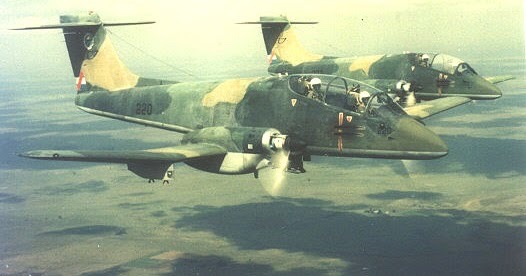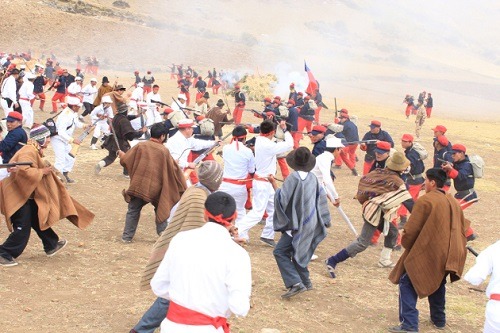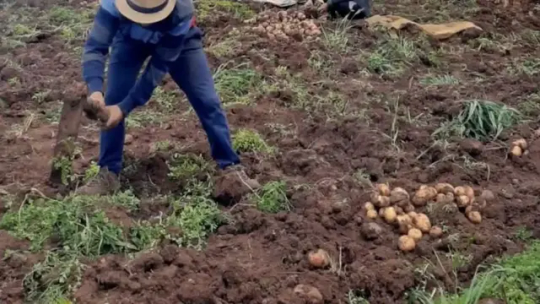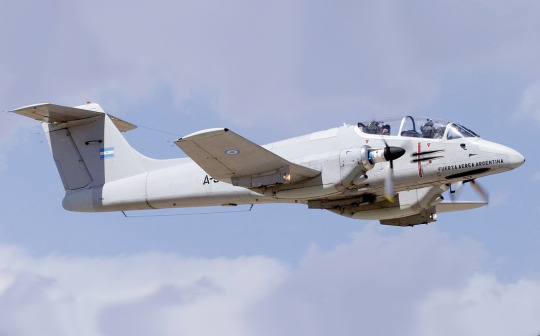#Pucará
Explore tagged Tumblr posts
Text
Gran Feria Campesina en Jujuy: Productores de cuatro regiones se reúnen en la Vieja Estación La Gran Feria Campesina Pucará se realizará el 5 y 6 de junio en Jujuy, uniendo productores de cuatro regiones para ofrecer productos frescos.
#Abra Pampa#Aguas Calientes#artesanos#Centro Cultural Belgrano#comercialización directa#comercio justo#comunidad#Desarrollo Económico#econom��a local#emprendedores#Feria Campesina#Feria Campesina Pucará#Fraile Pintado#Gran Feria Campesina#Huacalera#identidad comunitaria#Jujuy#La Quiaca#Maimará#Movimiento Campesino Indígena Pucará#Palma Sola#Perico#prácticas agrícolas#productores#productos frescos#San Pedro#sostenibilidad#testimonios#Tumbaya#Vieja Estación
2 notes
·
View notes
Text
Gran Feria Campesina en Jujuy: Productores de cuatro regiones se reúnen en la Vieja Estación La Gran Feria Campesina Pucará se realizará el 5 y 6 de junio en Jujuy, uniendo productores de cuatro regiones para ofrecer productos frescos.
#Abra Pampa#Aguas Calientes#artesanos#Centro Cultural Belgrano#comercialización directa#comercio justo#comunidad#Desarrollo Económico#economía local#emprendedores#Feria Campesina#Feria Campesina Pucará#Fraile Pintado#Gran Feria Campesina#Huacalera#identidad comunitaria#Jujuy#La Quiaca#Maimará#Movimiento Campesino Indígena Pucará#Palma Sola#Perico#prácticas agrícolas#productores#productos frescos#San Pedro#sostenibilidad#testimonios#Tumbaya#Vieja Estación
0 notes
Text
ANUEL EN EL OJO DEL HURACÁN INTERNACIONAL POR HOMENAJE A NARCO ASESINADO EN CHILE
El cantante puertorriqueño Anuel AA se encuentra en el centro de la controversia a nivel internacional, especialmente en Chile, tras dedicar emotivos mensajes en su cuenta de Instagram a Carlos Acevedo Ramírez, alias el “Guatón Mutema”, un conocido narcotraficante chileno asesinado a balazos el pasado domingo 27 de abril mientras veía un partido de fútbol en la vía pública de la Villa Pucará, en…
#Anuel AA#Anuel AA Chile#artistas en controversia#Carlos Acevedo#controversia Anuel AA#Dehilan#El Guatón Mutema#escándalo en Chile#homenaje a narcotraficante#Mundoxnews#música urbana#narcotráfico Chile#redes sociales Anuel#reguetón polémica#Villa Pucará
0 notes
Text

Quechua jar representing a bull, c. 1935-1945
Pucará, Peru
Pottery, clay slip, glaze, paint
33.00 x 11.50 x 27.50 cm
Smithsonian NMAI 20/8146
Records on similar pieces in the collection note they demonstrate how Inca llama ritual iconography was transferred onto the Spanish bull.
#animals in art#20th century art#museum visit#effigy vessel#animal effigy#bull#Peruvian art#Andean art#South American art#Indigenous art#Quechua art#Smithsonian NMAI#1930s#1940s#pottery#ceramics#polychrome#livestock#animal iconography
176 notes
·
View notes
Note
Thoughts on the FMA IA 58 Pucará?



A neat looking ground attack light aircraft which on paper packed quite the punch, with 2 20mm cannons, 4 .30 machine guns, and about 1.5 tons of ordinance, either bombs, rockets or s combination of both.
In practice though, it was a bit of a paper tiger, as while both tough and fast, it had a massive design flaw in which the faster you were flying, the stiffer the controls got, to the point that if you were ever to reach the maximum speed, the plane was effectively uncontrollable, made worse the lower you flew, meaning that it couldn’t really aim during combat runs unless it slowed down, so either you actually hit what you were aiming at, and ensured you yourself were an easy target, or you prayed to god whatever you wanted death actually died the moment you pulled the trigger, which the Falklands War proved barely of ever happened.
So yeah, good in theory, shit in practice, made worse by the fact that it was designed around an engine that became obsolete the moment the plane entered service, effectively killing its export potential, hence why it only had three export customers, Colombia, Uruguay and Sri Lanka, with only two of them actually buying the damn thing (Colombia’s were a donation), and only seeing real combat outside the Falklands in Sri Lanka, with a combat record so poor most planes were lost to accidents/combat, and the survivors were retired early due to lack of spare parts, courtesy of the aforementioned shitty engines.
In Colombia, a country desperate for combat aircraft to deal with the massive surge of attacks from communist guerrillas, the damn thing was never used in combat, it was that bad.
What a shitshow of a plane.
23 notes
·
View notes
Text
"Llevo mi sombra alerta sobre la escama del agua abierta, Y en el reposo vertiginoso del espinel,"
2002. A Luna-Soyuz spacecraft, launched by the Space Shuttle Atlantis, approaches the International Lunar Base, the 43th Interkosmos mission.
Darío asks to excuse himself to the living module to take a breath, at least as anyone can take a breath inside a pressurized spacecraft. Baikonur and Houston bounce the suggestion between themselves and they finally agree, he's just there to mind the payload after all, so might as well take it easy. He leaves his fellow astronaut and cosmonaut behind, and they resume bantering about the engineering of the Shuttle and the Buran, as they have done through all the trip.
"Sueño que alzo la proa y subo a la luna en la canoa, Y allí descanso, hecha un remanso mi propia piel."
On his mind, Darío knows the rotation of the craft. He knows where the spherical module of the Soyuz is heading. Looking through the viewport, like a sailor looking at a stormy sea, something he never experienced, he sees Earth rising over the horizon of the Moon.
"Calma de mis dolores, ay, Cristo de los pescadores, Dile a mi amada que está apenada esperándome,"
The craters of the Moon fly below him, endlessly repeating in a fractal landscape untouched by erosion. Darío remembers the countless lagoons of Corrientes like little dots, the first time he saw them when flying a Pucará over the green marshes.
His attention turns to the Earth. He can't see those lagoons from here. He can't even tell where Corrientes is. The picture is big, bigger than he ever imagined. The Atlantic glistens as its hit with the noon Sun, and the American continent spreads from pole to pole in its glory. He has to look up, as there is no South or North in space, to see the emerald Amazon, the spine of the Andes, and the endless Pampas. He can't tell where each land starts and ends, as clouds swirl over them.
The barren Moon is right below him, calling with her presence. It's real, close to him. That fishing village he thinks about, the living Earth above him, might as well be a fantasy.
"...Que ando pensando en ella mientras voy vadeando las estrellas, Que el río está bravo y estoy cansado para volver."
Darío narrows his eyes, trying to find the glint of a golden river.
25 notes
·
View notes
Text

Falklands war-era Argentinian IA-58 Pucara ground support airplane modernized into ISR platform
Thursday, 11 January 2024 13:10
The IA-58 Pucará's engine replacement program, now known as the Pucará Fénix, has reached a pivotal milestone with the achievement of its remotorization certification from Argentina's Joint Military Aeronautical Airworthiness Directorate (Digamc). This certification, awarded to the Argentine Aircraft Factory (FAdeA), signifies the commencement of the series aircraft's update.
Ezoic
Follow Air Recognition on Google News at this link
Falklands Argentina IA 58 Pucara ground assault airplane modernized into modern ISR Platform 001The Argentinian IA-58 Pucarás will benefit from an engine replacement program (Picture source: FAdeA)
EzoicThis evolution is the result of a collaboration between FAdeA, the Argentine Air Force (FAA), Digamc, and international partners such as Pratt & Whitney Canada P&WC, Hartzell, and IAl. The joint effort bore fruit after over 150 hours of flight testing and 109 test flights, leading to the equipping of each aircraft with two Pratt & Whitney PT6A-62 turboprop engines and Hartzell four-blade propellers.
Ezoic
The Pucará Fénix, formerly a ground-attack aircraft, is now intended for ISR (Intelligence, Surveillance, and Reconnaissance) missions. This shift towards modern surveillance functions contrasts with the attack role of the rest of the Pucará fleet.
The project includes a complete modernization of the cockpit and avionics systems, the addition of air conditioning systems, and the removal of obsolete components. The Pucará Fénix thus becomes the platform for the progressive development of the ISR POD, with enhancements such as AESA active antenna radars and EO/IR sensors envisioned in future configurations.
The remotorization certification of the Pucará Fénix represents a significant advancement in modernizing Argentina's aerial arsenal. By pivoting towards ISR capabilities, Argentina is adapting its military equipment to the current demands of defense and surveillance operations.
The development of the IA-58 Pucará, initiated in August 1966 by the Argentine Air Force (FAA), aimed to create an aircraft suitable for close air support (CAS) and counter-insurgency (COIN) missions. The first prototype, named AX-2 Delfin, equipped with 904 hp Garrett TPE331I/U-303 engines, made its maiden flight on August 20, 1969. "Pucará", meaning fortress in the Quechua language, was later fitted with French Turbomeca Astazou XVI G engines in other prototypes.
Constructed entirely of metal, the IA-58 is designed to operate in light guerrilla conditions, with an armored cockpit and windshield and landing gear suited for unprepared runways. It is notable for its ability to take off in just 80 meters using JATO rockets and is designed for simple maintenance. This two-seater is equipped with Martin-Baker Mk 6AP6A zero/zero ejector seats.
The serial version IA-58A, or Pucara Alpha, first flew on November 8, 1974, and was delivered in 1975 to the III Air Brigade, with 108 units built until 1986. The IA-58B, or Pucara Bravo, featured 30 mm DEFA 553 cannons and improved avionics but was built in only one example. Similarly, the IA-58C (Pucara Charlie), a single-seat version with a HUD, IFF, and additional hardpoints, was built in only one example. Finally, the IA-66, equipped with more powerful Garrett engines, was also produced in a single example.
The IA-58 Pucarás were deployed by Argentina during the Falklands War, where, despite their numbers, they were unsuited against an adversary like the British, suffering heavy losses mainly on the ground. They did, however, manage to shoot down a Westland Scout. After the conflict, 11 aircraft were captured by the British, including 4 in flying condition, and 6 are now displayed in museums.
With the emergence of more advanced technologies and the evolution of military requirements, the Pucará began to show signs of obsolescence, particularly in its engines and avionics systems. In response to these challenges, the Pucará Fénix project was launched, aiming to modernize the aircraft through remotorization with Pratt & Whitney PT6A-62 turboprop engines and the update of avionics systems and propellers. This renewal has also led to a significant shift in the aircraft's role, transforming it from a ground attack aircraft to an ISR (Intelligence, Surveillance, and Reconnaissance) platform, suited to contemporary needs for reconnaissance and surveillance. The Pucará Fénix is now envisioned as an evolutionary platform, capable of progressively integrating cutting-edge technologies such as AESA active antenna radars and EO/IR sensors, thus marking its transition to a more sophisticated and strategic role in the Argentine military.
@Airrecognition via X
6 notes
·
View notes
Text

Este día July 09, 2025 at 12:01AM en el Calendario Batallas de Pucará, Marcavalle y Concepción https://ift.tt/YwntSa1 En esta fecha, se recuerda y conmemora las Batallas de Pucará, Marcavalle y Concepción, que fueron acontecimientos bélicos favorables al ejército peruano, durante la etapa de resistencia frente al ejército invasor chileno. Calendario
0 notes
Text
Biotecnología veterinaria: el avance de las veterinarias cordobesas en el mundo del polo

Veterinarias lideran una revolución en el polo con biotecnología: reviven la genética del legendario padrillo Pucará. Un avance clave para el deporte y la industria equina.
Vets revive polo legend Pucará using biotech. A breakthrough for both the sport and the equine industry.
0 notes
Photo

Comunidades puneñas sustentan 70% alimentos Perú sin apoyo estatal
Las comunidades campesinas de Puno proveen entre el sesenta y setenta por ciento de los alimentos del Perú, revela Edgar Aguilar de Savia Andina Pucará. Este aporte vital permanece invisible para el Estado, que prioriza la agroexportación sobre la producción andina ancestral.
Más de siete mil comunidades en el país cultivan al menos el diez por ciento de la tierra agrícola nacional. Solo en Puno existen más de cien comunidades. Estudios de los años ochenta y noventa ya confirmaron su enorme potencial productivo alimentario.
El gobierno central otorga beneficios tributarios e inversiones significativas al sector agroexportador. Los pequeños agricultores del altiplano, en contraste, deben progresar con sus propios recursos limitados. Esta situación muestra una falta de apoyo concreto a la agricultura comunal.
Las políticas globales imponen privatización, liberalización económica y desregulación a todos los países. Este modelo afecta directamente a la agricultura puneña y andina, orientándola hacia la exportación y la mercantilización de la naturaleza.
Las normas legales recientes resultan especialmente discriminatorias para las comunidades andinas. Se necesitan propuestas surgidas desde las bases, porque los actuales modelos agropecuarios dañan el planeta y la región.
Existe una grave dificultad para que estas comunidades tengan representación en el Congreso. Gobiernos regionales y universidades frecuentemente desconocen la cultura agrícola andino-amazónica. Esto frena proyectos que integren sabiduría ancestral con demandas actuales.
La transformación de alimentos, desde la papa hasta el chuño, nace de conocimientos milenarios. Esta sabiduría se basa en la organización colectiva de cada comunidad, garantizando producción constante de comida.
El verdadero liderazgo reside en la comunidad misma, según Edgar Aguilar. Las autoridades tradicionales de la chacra ejercen un liderazgo orgánico y productivo. No depende de quien tenga mejor discurso.
Se requiere un diálogo entre saberes ancestrales y conocimientos modernos. Lo ancestral no resolverá solo el hambre mundial, pero potenciará la capacidad productiva existente.
Debe erradicarse la idea del campesino como sinónimo de carencia o asistencialismo. Es clave reconocer que comunidades generan más del sesenta por ciento de nuestra comida con sus saberes. Esto debe reflejarse en estadísticas oficiales.
Edgar Aguilar plantea tres retos urgentes. Primero, contextualizar la capacidad productiva andina con tecnología actual y sus límites. Segundo, construir conocimiento alternativo al modelo agroexportador, recogiendo prácticas comunales.
Tercero, las autoridades originarias deben reasumir su rol orgánico en las comunidades. El mundo exterior necesita comprender esta función ancestral.
Un ejemplo es el manejo comunitario del agua. Pese a leyes que centralizan su gestión, las comunidades demuestran milenios criando, sembrando y cosechando agua. Lo mismo aplica para semillas y territorio.
El mensaje final es claro: encariñarnos con la naturaleza y respetar sus ciclos. Dar valor a su comunicación, entendernos entre humanos y evitar violencia ambiental. Así reconstruimos una cultura orgánica fuerte.
Puno
via https://pachamamaradio.org/comunidades-punenas-sustentan-70-alimentos-peru-sin-apoyo-estatal/
0 notes
Text

IA 58 Counter Insurgency aircraft-Argentine Air Force
21 notes
·
View notes
Link
0 notes
Text
ASELSAN'dan Arjantin Donanması'na Modernizasyon Teklifi
ASELSAN Genel Müdürü Ahmet Akyol, Arjantin Donanması’na ait MEKO 360 sınıfı fırkateynlerin modernizasyonu projesiyle ilgili önemli açıklamalarda bulundu. Pucará Defensa’ya verdiği özel röportajda Akyol, ASELSAN’ın bu modernizasyon için sunduğu teklifin avantajlarını detaylı bir şekilde anlattı. ASELSAN, Türk Deniz Kuvvetleri’nin MEKO 200 (BARBAROS Sınıfı Fırkateyn) gemilerinin modernizasyonunda…
0 notes
Text
14 de abril de 2025 Aviación real: Gestión del espacio aéreo: En España, ENAIRE destacó avances en la gestión del tráfico aéreo, con Óscar Royano liderando la Región Sur para optimizar operaciones (Aviación Digital).
Seguridad aérea: La ONU reiteró su preocupación por interferencias en sistemas GNSS, instando a proteger la navegación aérea global tras incidentes recientes (Aviación Digital). En Francia, la investigación sobre la colisión de dos aviones de la Patrouille de France continúa, sin víctimas fatales (Aviación Digital).
Innovación tecnológica: Sateliot recibió 13,8M€ para expandir su red de satélites 5G, mejorando la conectividad en aviación (Aviación Digital). Por otro lado, Airbus y Dassault enfrentan críticas de pilotos por su propuesta de reducir tripulantes en cabina (Aviación Digital).
Aviación comercial: Arajet inició vuelos a EE. UU., fortaleciendo su hub en el Caribe (X post). Avianca anunció un aumento temporal de frecuencias internacionales desde Colombia (X post). En Asia, Korean Air reportó un aumento del 3% en ingresos del primer trimestre, alcanzando 2,69 mil millones de USD (Asian Aviation). IndiGo trasladará operaciones del Terminal 2 al 1 en el aeropuerto de Delhi a partir del 15 de abril (Economic Times). Akasa Air planea expandir su flota a 30 aviones para julio, con un crecimiento del 100% en pasajeros (Economic Times).
Carga aérea: WorldACD reportó una caída en el tonelaje global de carga aérea entre el 31 de marzo y el 6 de abril, atribuida a festividades como Eid y a incertidumbre económica (Asian Aviation).
Aviación virtual: Simuladores: Gen24 FLYBIZ instalará un simulador A320 FNPT II MCC en Mumbai en 2025, equipado con tecnología avanzada para entrenamiento de pilotos (Asian Aviation). La Fuerza Aérea Argentina sigue utilizando simuladores como el del Pucará para ejercicios internacionales, mejorando capacidades logísticas y operativas (Aviación Digital).
0 notes
Text
Prefectura inauguró mejoramiento en canal de Izhcayacu
Nueva entrada publicada en https://www.noticiasdelcanar.com/2025/04/08/prefectura-inauguro-mejoramiento-en-canal-de-izhcayacu/
Prefectura inauguró mejoramiento en canal de Izhcayacu

Con el objetivo de fortalecer el desarrollo productivo del sector rural, la Prefectura del Cañar inauguró el mejoramiento de un tramo del canal principal de riego Izhcayacu, que abastece a siete comunidades de la parroquia Ingapirca, en el cantón Cañar. Esta importante obra fue posible gracias a un convenio de cooperación entre el Gobierno Provincial y la comunidad beneficiaria.
La intervención consistió en el mejoramiento del sistema de riego mediante la instalación de tubería, lo cual representa una solución técnica eficiente para optimizar el uso del recurso hídrico, reducir pérdidas por filtración y garantizar un abastecimiento constante a los usuarios.
La Prefectura, a través de la Dirección de Riego y Drenaje, aportó con materiales de construcción como tubería, cemento, ripio y arena, además de la dirección técnica necesaria para la ejecución de la obra. Por su parte, la comunidad contribuyó con mano de obra calificada y no calificada, así como con la provisión de grava, fundamental para el sistema de drenaje. Esta alianza estratégica entre la Prefectura y los usuarios permitió una inversión total que bordea los 130 mil dólares, incluyendo la contraparte de los usuarios.
El sistema de riego Izhcayacu beneficia directamente a 750 familias de las comunidades Silante Alto, Silante Bajo, El Cisne, Pucará, El Colegio, El Castillo y Chorroloma; su área de cobertura son mil hectáreas.
Marcelo Jaramillo, prefecto del Cañar, recalcó que estos trabajos corresponden a una labor conjunta con los beneficiarios. Mientras que la obra más grande que se ejecuta en el sistema y se lo realiza mediante contrato aún está en ejecución, y tiene un costo de un millón y medios de dólares.
La autoridad provincial recalcó que, la implementación de sistemas de riego tecnificados con tubería ofrece múltiples ventajas para las comunidades agrícolas y ganaderas. Entre ellas, mejora la eficiencia en la distribución del agua, reduce el riesgo de contaminación, minimiza el mantenimiento de los canales; evita la pérdida del recurso a causa de las filtraciones.
“Gracias a esta obra, los agricultores podrán planificar sus cultivos con mayor certeza, diversificar sus cultivos; mientras que los ganaderos contarán con el abastecimiento necesario para sus actividades diarias, incrementando así la productividad y sostenibilidad del sector”, insistió Jaramillo.
El prefecto provincial ratificó su compromiso con el desarrollo integral del campo, impulsando proyectos que mejoren la calidad de vida de los habitantes y fortalezcan las capacidades productivas de las comunidades rurales, por ello, dijo, “desde que asumimos la administración y hasta el último día de mi gestión trabajaremos incansablemente por los distintos sectores de nuestra provincia”.
Ángel Yamasqui, presidente de la Junta de Riego Izhcayacu, informó que la conducción principal tiene una longitud de 11 kilómetros, de estos, 3,1 kilómetros está entubado. “Gracias a la intervención de la Prefectura estamos mejorando y tecnificando nuestro sistema”, enfatizó.
Añadió que, “antes el agua tardaba seis horas en llegar a sus parcelas y ahora, a pesar del pequeño tramo que está entubado, tarda tres horas. Para nosotros es una gran ventaja porque el agua viene más rápido y en todo su caudal, ya no se desperdicia por las filtraciones. El agua es vida. Sin el agua no vivimos”, recalcó el dirigente.
0 notes
Text
Splatoon: The Vestigial Species - Design Ideas (South America)
If you have not viewed the main post first, please do so. Otherwise, here is a list of archaeological cultures which you are free to choose from to use as an inspiration when designing your human society!
Andean Region
Chinchorro Culture
Wankarani Culture
Chavín Culture
Chorrera Culture
Paracas Culture
Pucará Culture
Nazca Culture
Bahía Culture
Amazon River
Marajoara Culture
Arawak People
Patagonia
Tehuelche People
Selk'nam People
Yahgan People
Kawésqar People
#splatoon#splatoon 2#splatoon 3#splatoon 4#splatoon headcanon#splatoon fanart#splatoon fandom#splatoon art#fan concept#art collab#art contest#collaborative projects
1 note
·
View note